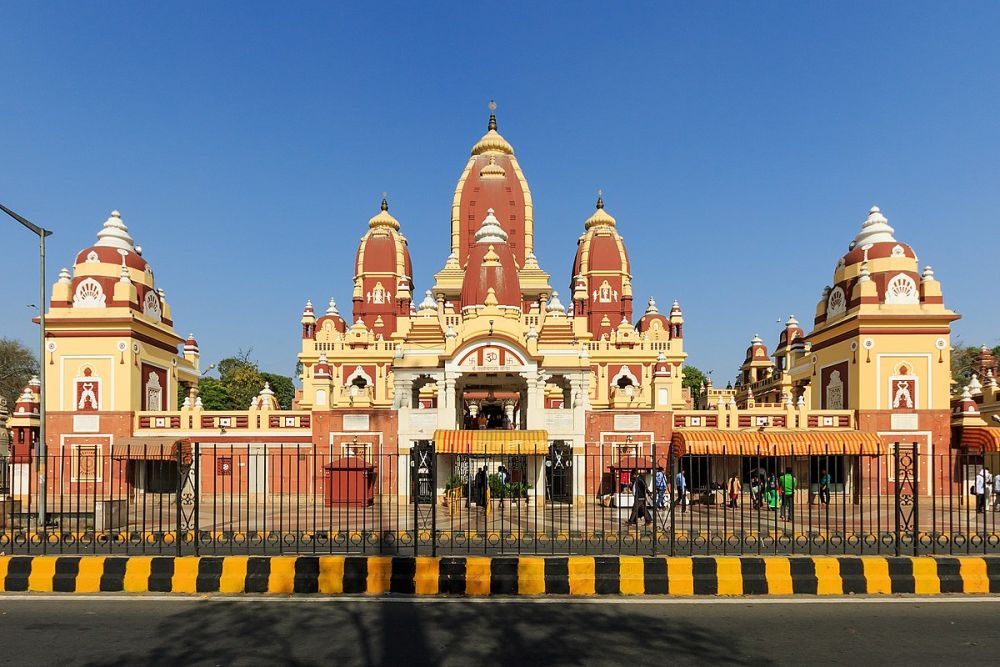

The Laxminarayan Temple, commonly known as Birla Mandir, is a Hindu temple dedicated to Laxminarayan in Delhi, India. Laxminarayan usually refers to Vishnu, the preserver in the Trimurti, also known as Narayan, when he is with his consort Lakshmi. The temple, inaugurated by Mahatma Gandhi in 1939, is notable for welcoming devotees of all castes, a condition Gandhi set before agreeing to inaugurating it. Since its inception, the temple has been an important nexus for religious tourism in Delhi.
The history of tourism at the Laxminarayan Temple has been shaped by India’s evolving cultural and socio-political milieu. Post-independence, the temple became a symbol of unity and spiritual solace in a newly sovereign nation. It attracted not only locals but travelers from around the globe who were curious to witness India's rich heritage and spirituality. The exquisite architecture of the temple, combining traditional Nagara style with modernity, has consistently drawn the attention of history buffs and architecture enthusiasts.
Throughout the decades, the Birla Mandir has seen a consistent influx of tourists due to its importance in India’s cultural and religious tapestry. The temple complex, sprawling across 7.5 acres, houses numerous shrines, fountains, and a large garden, and provides a serene escape from the bustling city. The annual celebration of festivals such as Janmashtami, Diwali, and Navaratri are particularly vibrant times that offer a unique cultural experience for visitors.
In recent years, there has been a notable shift towards experiential tourism where travelers seek more holistic experiences that include spirituality, wellness, and cultural immersion. The Laxminarayan Temple has become a focal point for such tourists who wish to engage in religious ceremonies, yoga sessions, and meditation programs. This trend has been fuelled by increasing global interest in Indian spirituality and the wellness industry.
Furthermore, the rise of digital and social media tourism has also impacted how people experience the Birla Mandir. With travelers now seeking ‘Instagrammable’ destinations, the temple’s picturesque gardens and stunning façade have become popular backdrops for photographs. The use of virtual reality and augmented reality experiences around such heritage sites has also started emerging, offering virtual tours that attract the digitally savvy traveler.
In addition, the Indian government’s push to enhance the ease of travel with e-visas and improved tourist-friendly infrastructure has significantly boosted international tourist footfall at religious sites such as the Birla Mandir. There is also an increased emphasis on sustainable tourism, with initiatives to maintain the temple premises and its environment to ensure it remains a cherished destination for generations to come.
Accessibility improvements, including better signage and tourist information, guided tours, and visitor facilities, have made the temple more welcoming to both domestic and international tourists. As a part of broader initiatives to promote tourism in the capital, the Laxminarayan Temple continues to be a must-visit location for millions of tourists exploring Delhi’s historic and cultural landscape.